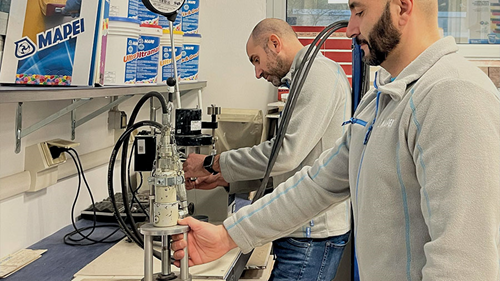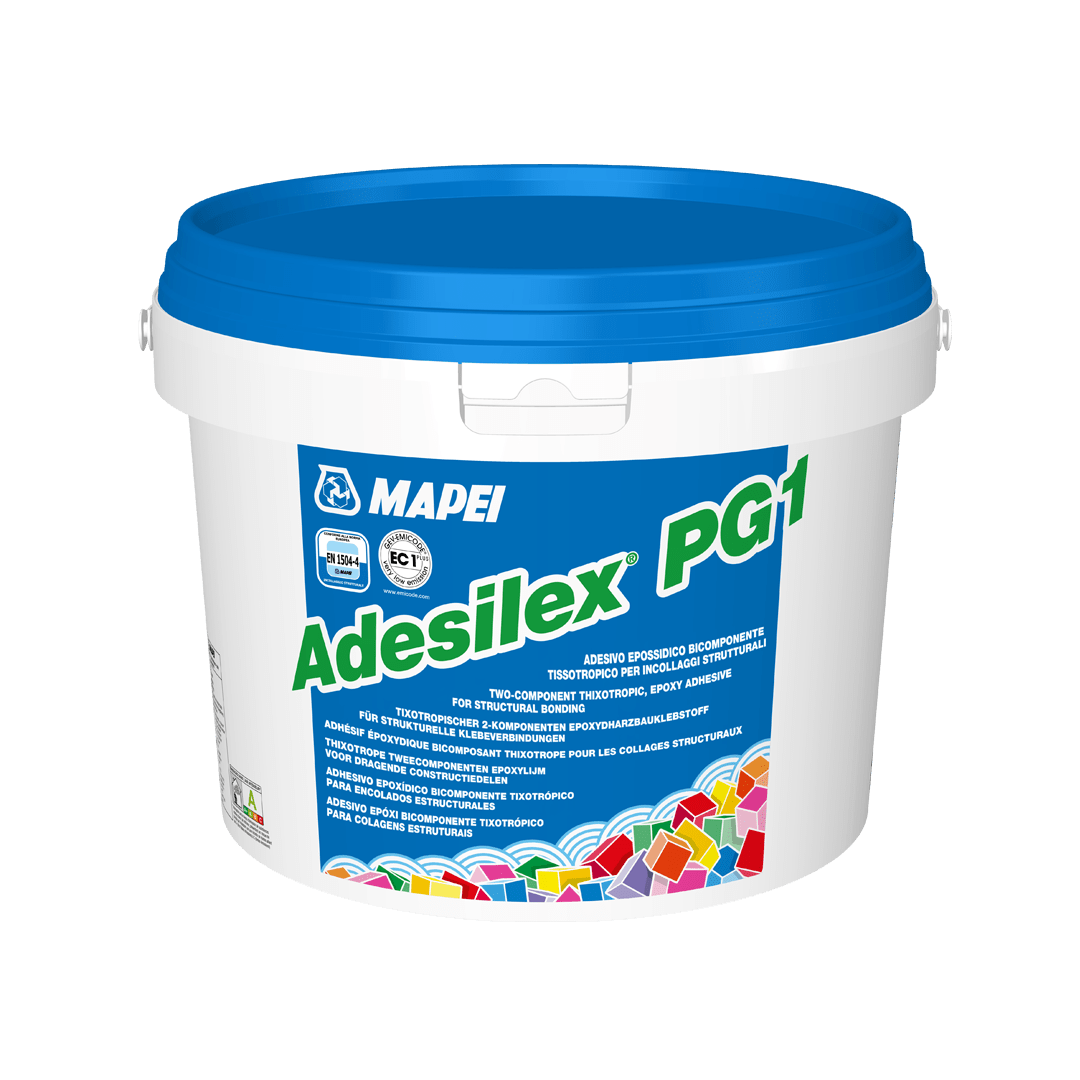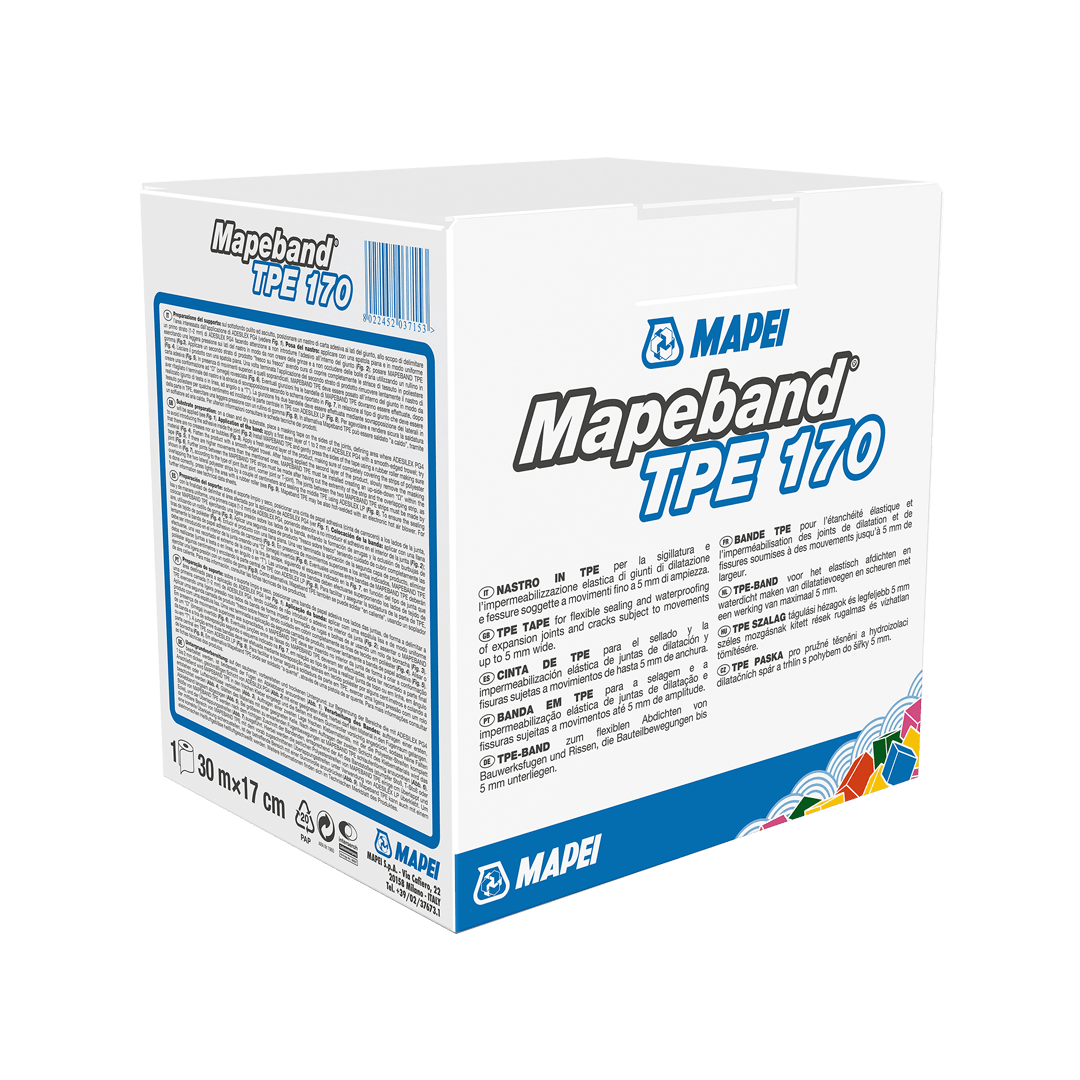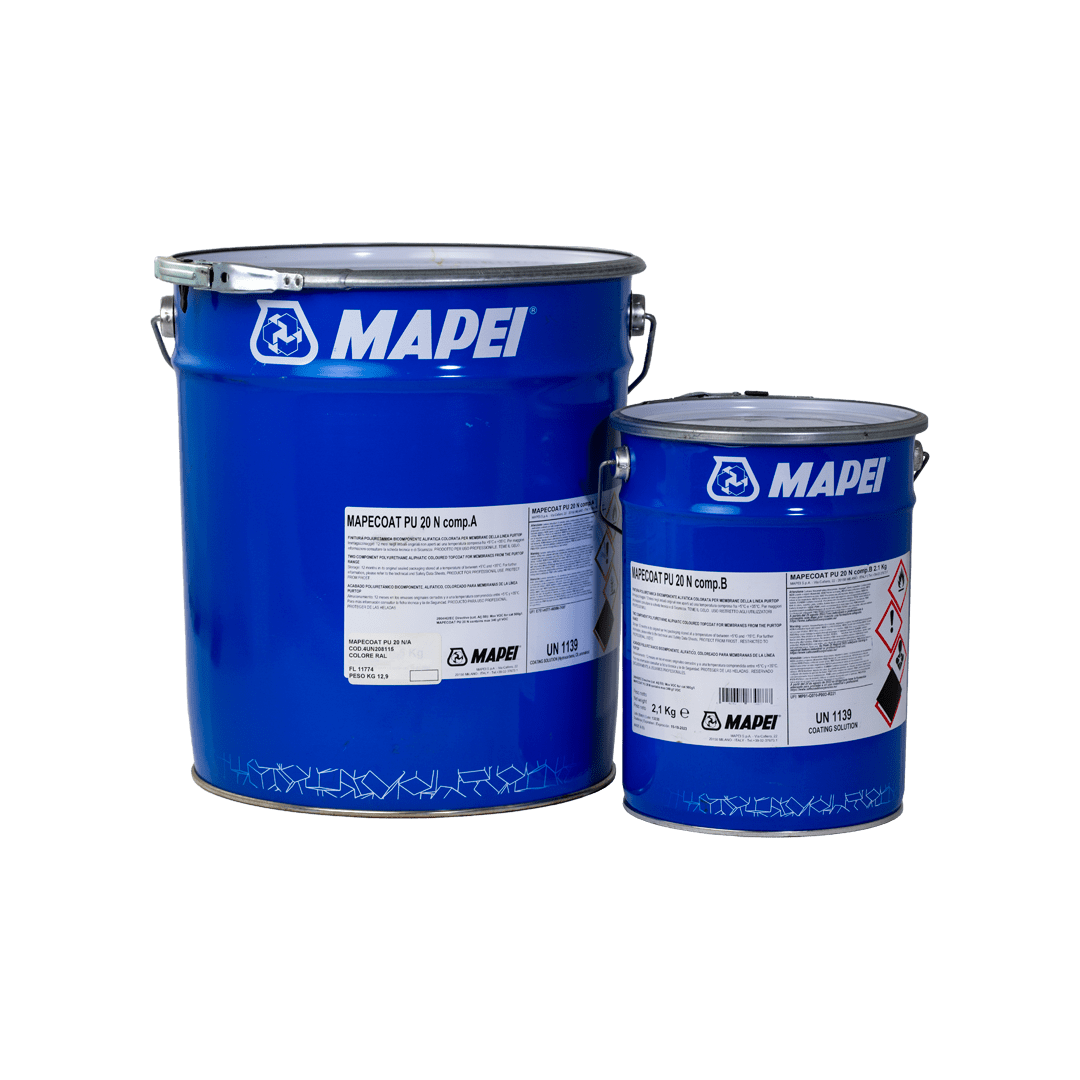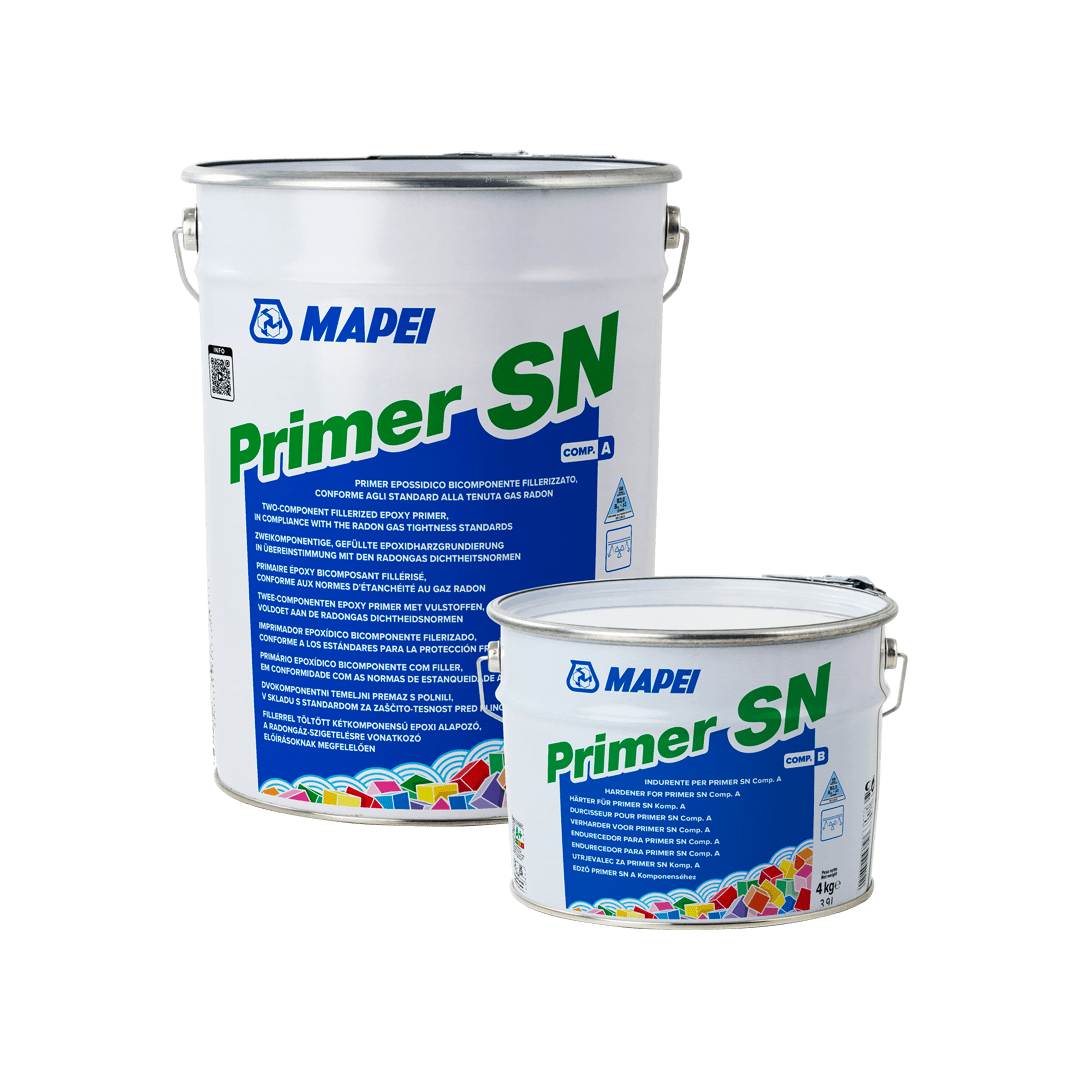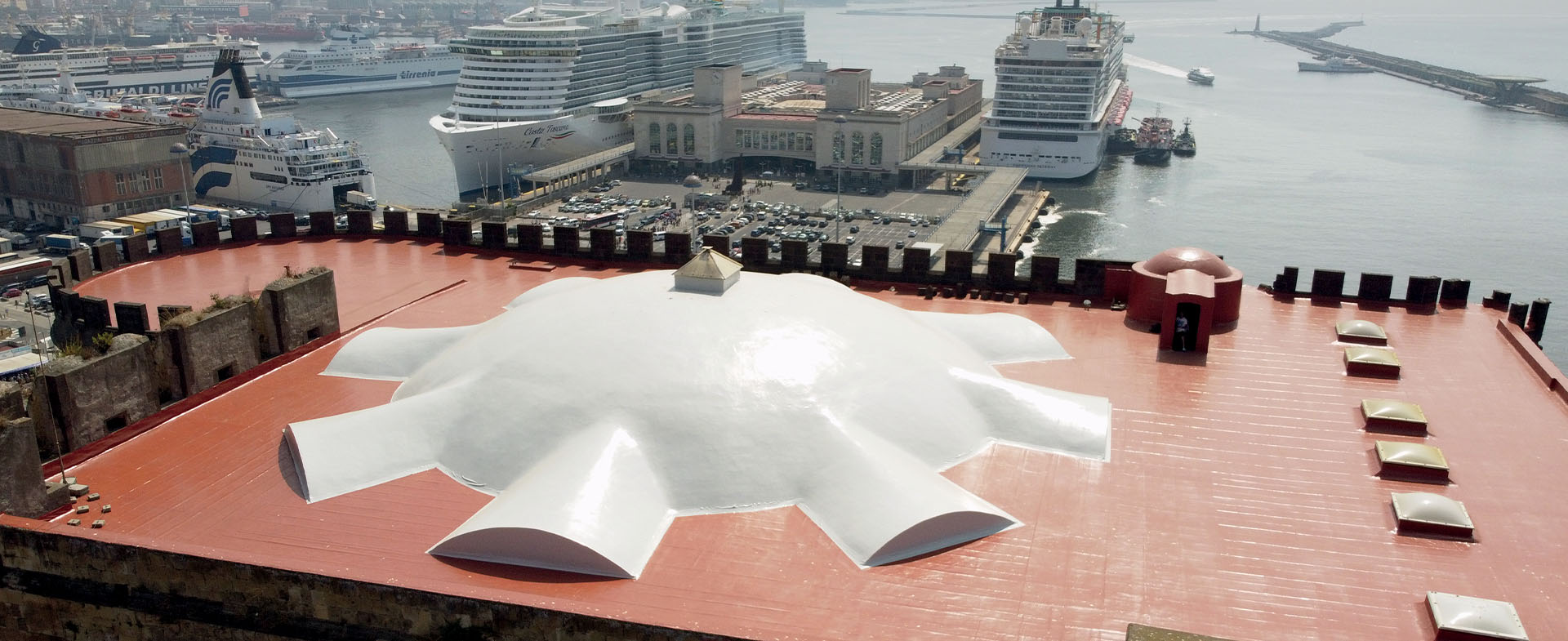
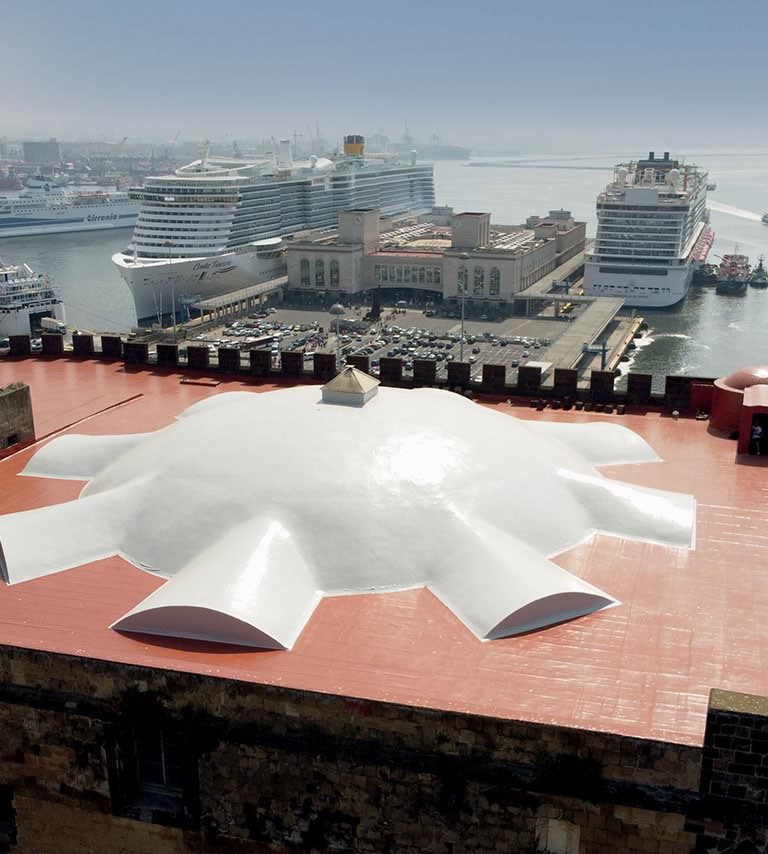
Projects
/
1/22/2024
Restoring Castel Nuovo in Naples
Mapei contributed to the redevelopment project with a membrane of the latest generation used to counteract water infiltrations
Mapei contributed to the project as Sponsor and supplier of a waterproofing membrane
of the latest generation used to counteract water infiltrations
Royal residence, fortress, a place of culture: Castel Nuovo is one of the symbols of Naples and for almost a thousand years the theatre and a spectator of the history of the city. Its construction started in 1279 under the reign of Charles I of Anjou (from whom it takes its commonly used name of Maschio Angioino) following which, over the centuries, it underwent various extension and renovation works. Today it maintains the same look it was given midway through the 15th century by Alfonso I of Aragon: an imposing building with a trapezoidal footprint encircled by five mighty round towers.
During the Middle Ages and the Renaissance era, it was the home of several monarchs, from the Angioine and Aragonese dynasties to the Bourbon dynasty in the 17th century, when court life transferred to the new Royal Palace. A centre of culture in the 14th century – with the presence of talented authors and painters like Francesco Petrarca, Giovanni Boccaccio and Giotto – it is now the home of various historical and cultural associations and the City Museum. Visitors are able to admire the Palatina Chapel, the only part that remains of the fourteenth-century Angioine castle, the Baroni Hall, where until 2006 Naples City Council held meetings, and the Armoury Room, along with numerous frescoes and paintings.
Mapei took part in the redevelopment work on Castel Nuovo as Official Sponsor. After replying to a request for tender issued by the City Council, a joint team was set up between Mapei and the companies Saces, Studio Discetti, Consorzio Campale Stabile and BTA to carry out the entire operation free of charge: from design work to works management, right up to the supply of materials and execution of the work.
Work was carried out on the roofs of the building to counteract the serious infiltrations of water into the Baroni Hall and the San Giorgio Tower, along with the adjacent areas, for a total surface area of around 2,500 m2.
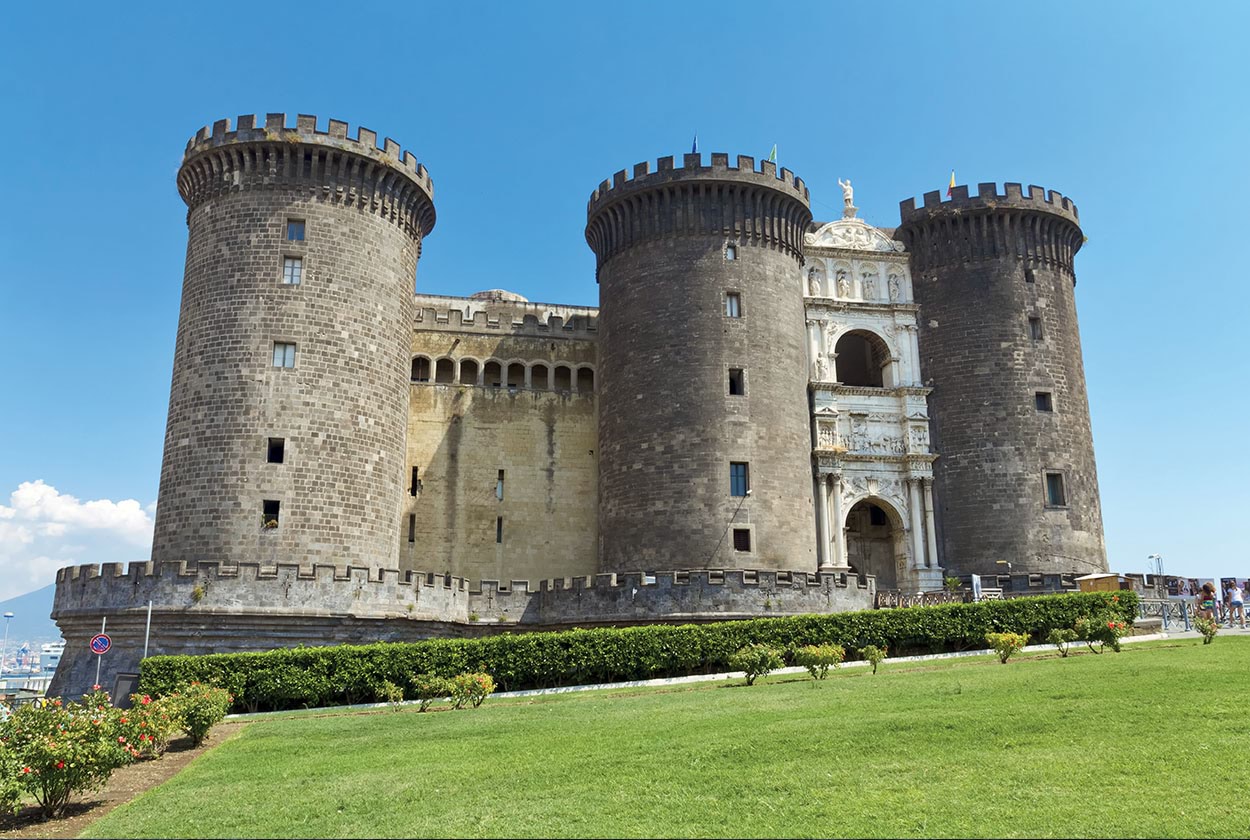
Substrate preparation
The first step was to prepare the substrates which were each approached differently according to the extent of the damage and the type of surface. These substrates were made up for three quarters of badly deteriorated bituminous membranes while the remaining portions were protected with a liquid-applied membrane.
In the areas with the bituminous membrane, which was suffering from localised damage, the membrane was cut and lifted, the water that had accumulated underneath was removed and then the membrane was fixed back in place.
The next step was to apply PRIMER PU 60 one-component, moisture curing polyurethane primer, to prepare the substrate for the waterproofing treatment applied after.
In the areas with the liquid membrane, on the other hand, the membrane was removed with a grinding machine to get rid of all traces of products and any loose material and the substrate was repaired by applying MAPEGROUT 430 fibre-reinforced thixotropic mortar (which is now available as MAPEGROUT 430 ZERO). Once the membrane had been removed and the cementitious substrates had been levelled off, a coat of PRIMER SN, a two-component, fillerized epoxy primer, was applied and then broadcast with QUARTZ 0.5 sand.
After cleaning the metal work with grinders and pneumatic drills, it was sanded down and a coat of MAPEDECK PRIMER 200 adhesion promoter for polyurethane systems was applied.
MAPEBAND TPE, a TPE tape designed for elastic waterproofing and sealing expansion joints and cracks subject to movement, was placed in the slope changes and joints to give continuity when applying the polyurea membrane. The tape was bonded with ADESILEX PG1 adhesive.

Once the cementitious substrates had been levelled off, PRIMER SN was applied and then broadcast with QUARTZ 0.5.
Waterproofing the surfaces
Once the substrates had been prepared it was time for the actual waterproofing of the surfaces, which was achieved by spray-applying PURTOP 500 N two-component, solvent-free, rapid-reticulation, hybrid polyurea membrane with a bi-mixer pump at a rate of 2.2 kg/m2 and a thickness of around 2 mm.
This system adheres firmly to substrates and, after reticulation, forms a strong, continuous, and flexible membrane ready for foot traffic very soon after application. Thanks to its high tensile strength and crack-bridging capacity (including at low temperatures), this product is able to adapt to substrates of any shape or form without cracking.
The final stage was to apply two coats of coloured MAPECOAT PU 20 N two-component, aliphatic polyurethane topcoat for membranes from the PURTOP range. Where required, QUARTZ 0.5 sand was applied between the first and second coat to create a non-slip, matt finish.
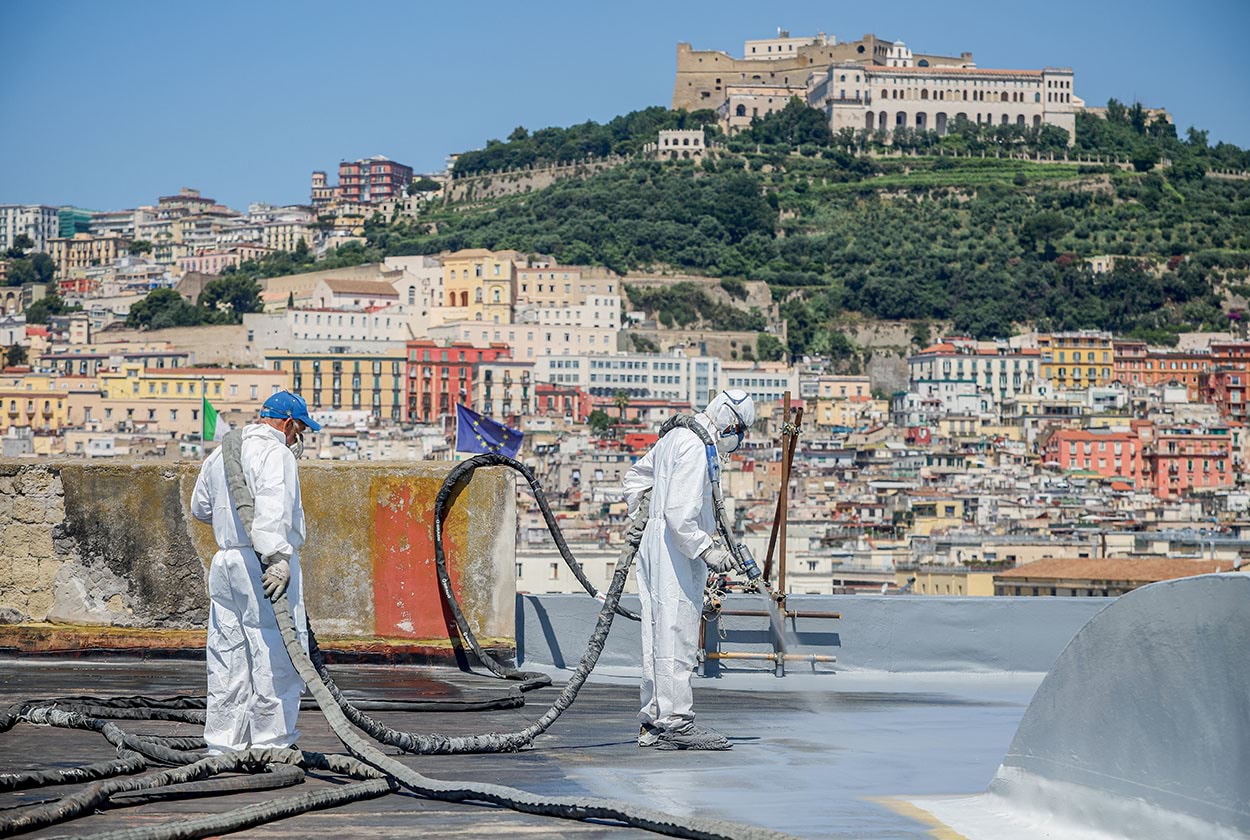
All the surfaces were waterproofed by spray-applying PURTOP 500 N two-component hybrid polyurea membrane.
WHAT THEY SAID
“By using the most suitable primer, we were able to apply the waterproofing product whatever the type of substrate. Once work had been completed, to replicate its original aesthetic appearance, it was decided to use a finish resistant to UV rays, due to its constant exposure to sunlight, in colours specified by the designers, the Works Director and the Local Heritage Authority”.
Paolo Discetti, Designer and Works Director
“Thanks to the polyurea waterproofing system proposed by Mapei, we were able to guarantee perfect waterproofing in a very short space of time”.
Pasquale Maisto, B.T.A. srl
“Thanks to the company’s technologies, Mapei was able to restore Castel Nuovo in compliance with the safeguarding indications specified by the Archaeological, Fine Arts and Landscape Authority”.
Giuseppe Puttini, Saces
“The aim of the work was to restore the waterproofing systems for the roofs in a short space of time without removing the existing layers. And this is why we decided using a polyurea system would be the most suitable solution”.
Maria Antonia Manna, Mapei SpA
“Over the course of its history Mapei has developed particular awareness for places of art. Our technologies and skilled employees are a vital contribution in making them come alive and durable, to the benefit of the entire community”.
Giuseppe Mastroianni, Mapei SpA

MAPECOAT PU 20 N two-component polyurethane finish was applied after creating the waterproofing layer.






